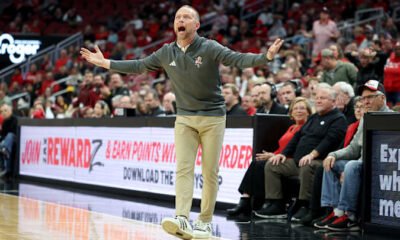Blog
Coming Home: Ozzy and Sharon Osbourne’s Three-Year Journey to Return to the UK
For decades, the Osbourne name has been a fixture in both rock history and pop culture. For fans of heavy metal, Ozzy is the “Prince of Darkness” — the voice behind Black Sabbath’s doom-laden anthems and his own solo catalogue of wild, unrestrained brilliance. For others, he’s the unexpectedly tender, sometimes bumbling, and always entertaining patriarch from The Osbournes, the reality show that turned the family into unlikely TV royalty in the early 2000s. But for Ozzy and Sharon, away from the stage lights and cameras, there has always been one dream quietly pulsing beneath the chaos: moving back home to the United Kingdom.
It’s a dream they’ve held for decades, but one that seemed to keep slipping away. Careers, family commitments, health battles, and the sheer gravity of their lives in Los Angeles kept pulling them back. Yet over the past three years, as a new documentary crew followed their lives in unprecedented detail, that dream finally took center stage.
The film — an intimate, often raw chronicle — tracks Ozzy and Sharon as they wrestle with the logistics, emotions, and personal hurdles of uprooting their life in California to return to the rolling green hills and rainy skies of England. It is part homecoming story, part love letter, and part meditation on aging, legacy, and the pull of one’s roots.
When filming began, the plan seemed straightforward enough: sell their long-time Beverly Hills home, find the perfect estate in the English countryside, and resettle near the friends, family, and familiar haunts that shaped their early lives. But nothing in the Osbourne world ever unfolds simply. Over the three-year journey, the project morphed into something deeper — a lens through which to explore not just the logistics of a move, but the meaning of “home” after a life lived on the road, in the spotlight, and across continents.
The cameras captured everything. Sharon, ever the powerhouse manager and strategist, juggling phone calls between real estate agents in Buckinghamshire and production meetings in Hollywood. Ozzy, battling his ongoing health issues with trademark gallows humor, cracking jokes about British weather one moment and quietly admitting how much he missed “proper” fish and chips the next. There were scenes of them sorting through decades of belongings — gold records, old tour jackets, family photos — deciding what would make the trip across the Atlantic and what would stay behind.
One of the film’s most poignant threads is Ozzy’s health. Parkinson’s disease, which he publicly revealed in 2020, has reshaped his daily life in ways both obvious and subtle. The move, for him, isn’t just about returning to his homeland; it’s about creating a place where he can live out his days surrounded by familiarity, far from the relentless glare of Los Angeles. “I want to look out my window and see green,” he says in one scene, his voice quiet but certain. “Not just palm trees and traffic.”
Sharon, for her part, is the steady force pushing the dream forward even when the obstacles mount. At times, her determination borders on defiance. “This isn’t just a house move,” she tells the camera in one tense sequence. “This is us taking back control of our lives. We’ve given so much to the world. Now we do this for us.”
Still, the move becomes a kind of chess game. The English property market proves brutal, with the right combination of privacy, accessibility, and space for the couple’s lifestyle hard to find. The pandemic adds delays. Shipping personal belongings becomes a bureaucratic nightmare. There’s a moment where Ozzy, surrounded by half-packed boxes, groans, “We should’ve just bought a tent in Hyde Park and called it a day.”
Yet the film is not without joy — in fact, it thrives in moments of levity. There’s footage of Ozzy visiting an old Birmingham pub incognito, grinning as he nurses a pint and chats with locals who have no idea who he is. There’s a scene of Sharon haggling over antiques in a small Cotswolds shop, her eyes lighting up when she finds a teapot identical to one her mother used. Their banter, as always, is razor-sharp: she teases him about forgetting his keys; he retaliates by hiding her phone in a teacup.
Family plays a significant role too. Jack and Kelly make appearances, weighing in on the pros and cons of their parents moving so far from the lives they’ve built in the States. There’s a bittersweet edge here — the children’s love for their parents tugging against the reality that “home” means something different for each of them now.
By the documentary’s second year of filming, the move begins to feel inevitable. The Beverly Hills mansion is sold. Plans for renovations on their chosen UK property — a sprawling estate with a view that seems to stretch forever — are underway. Ozzy’s mood lifts visibly in these scenes; he seems more animated, more himself, even as he continues to navigate the limits of his illness.
The final act of the film is where the emotional weight truly lands. In the closing sequences, the Osbournes stand in their new English home for the first time as official residents. It’s pouring rain outside, but they leave the doors open to let the cool, damp air in. Ozzy steps onto the back patio, looks over the landscape, and simply says, “This is it. We’re home.”
It’s not a grand rock-and-roll moment. There’s no pyrotechnics, no roar of a stadium crowd. It’s just two people, decades into a marriage and a life together, standing side by side in the place they’ve been trying to reach for years. And it’s perfect.
In the Q&A after the documentary’s premiere, Sharon reflected on the journey. “You spend your life chasing so many things — success, security, whatever you think you need at the time,” she said. “But in the end, you just want to be where your heart feels full. For us, that’s here.”
Ozzy, never one for long speeches, simply added, “America gave us everything. But England… England made us.”
The documentary, in its quiet way, becomes more than a record of a house move. It’s a meditation on belonging, on what it means to circle back to where it all began. It’s about the resilience of love — between two people, between a family, and between a person and the land that shaped them.
And perhaps most of all, it’s a reminder that even the loudest lives eventually crave stillness. That even the “Prince of Darkness” needs a place to rest his crown.
-

 Blog5 months ago
Blog5 months agoPat Kelsey sends a strong three-word fiery message to the Louisville basketball’s team after their Cardinals 14th win…
-

 Blog7 months ago
Blog7 months agoNetflix releases “The Underdog,” a much-anticipated documentary about Drew Brees. slated for publication on the 25th
-

 Blog5 months ago
Blog5 months agoMikaela Shiffrin responds to cross-country skier Jessie Diggins’ letter following her failure to secure a solitary podium finish at the FIS Nordic Worlds
-

 Blog3 months ago
Blog3 months agoBehind the Turns: Netflix’s Upcoming Documentary on Mikaela Shiffrin’s Fights, Fears, and Love
-

 Blog4 months ago
Blog4 months agoLegacy Tour Led Zeppelin has officially confirmed their 2026 reunion tour, which will be their first extensive live performances since 2007. The “Led Zeppelin Legacy Tour 2026” will begin on June 10, 2026, at Los Angeles’ SoFi Stadium.
-

 Blog5 months ago
Blog5 months agoWomen’s Slalom Run 1 at the FIS Alpine Skiing World Cup: Are
-

 Blog5 months ago
Blog5 months ago“Courtside to Aisle-Side: Tyrese Haliburton and Jade Jones Set New Wedding Date”
-

 Blog7 months ago
Blog7 months agoFederica Brignone: “I’m fine, but my return to skiing is far off.”
